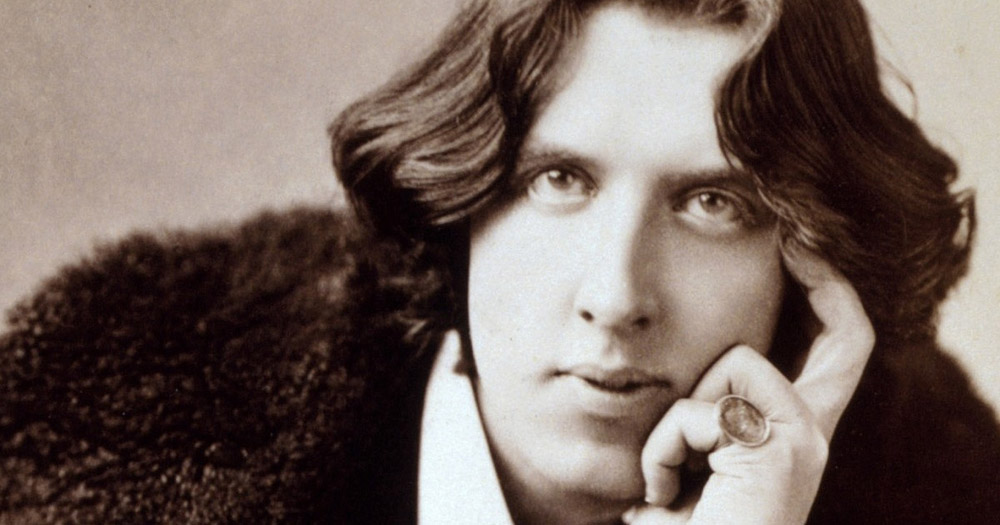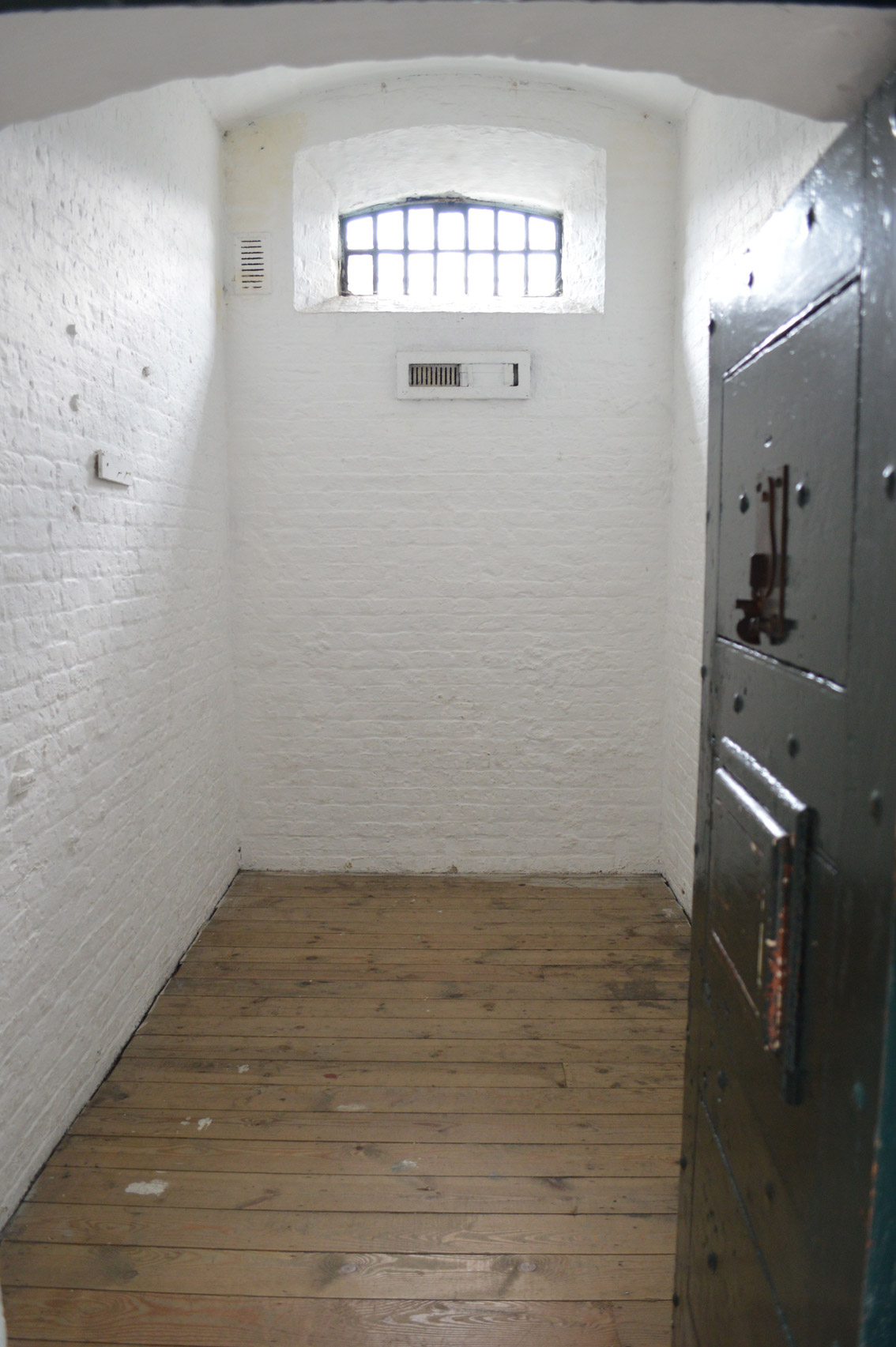“Afterwards, it much easier to convict gay men for sexual crimes and this change in the law was what led to Oscar Wilde’s conviction in 1895.”
Hi Brian, first things first, tell us what the Dublin Castle Scandal was all about, and what it has to do with Kilmainham Gaol?
In 1884 William O’Brien, the editor of the nationalist newspaper United Ireland, published an article in which it was implied that James Ellis French, the Director of Detectives with the Royal Irish Constabulary, had been engaging in sexual activity with other men. O’Brien was also a Home Rule MP and a fierce critic of the British rule in Ireland and saw this scandal as an opportunity to embarrass their administration in Dublin Castle.
French sued O’Brien for libel, which prompted O’Brien to hire a disgraced former Scotland Yard detective named John Mieklejohn to investigate the rumours about French. Through his investigations, Mieklejohn uncovered a whole network of gay men in Dublin, which included several senior figures of the establishment, including the head of the General Post Office, Gustavus Cornwall. O’Brien published this information, forcing Cornwall to also take a libel case against O’Brien.
Both Cornwall and French lost their suits, which led to huge celebrations by Nationalists all around Ireland. They saw it as a victory against what they deemed to be a decadent and corrupt regime in Dublin Castle. Cornwall, French and six other men were then arrested and most were imprisoned in Kilmainham Gaol.
Some were charged with committing sodomy, while others faced charges relating to running male brothels in the city. Four of them were found guilty, including a tea and wine merchant from Rathmines named James Pillar who was sentenced to 20 years Penal Servitude.
Was there active persecution of gay men in Dublin at the time?
While gay men were arrested and imprisoned for sexual activity in Dublin throughout the 19th century, the historical evidence doesn’t suggest that there was a policy of actively pursuing them.
Up until 1885 the main crime they would have been charged with was sodomy/buggery, which was very hard to prove in a court of law. However, it is clear that if a man was publicly accused of performing a homosexual act, the results were absolutely devastating for their lives and careers.
The year after the ‘Dublin Castle Scandal’, the Criminal Law Amendment Act 1885 was introduced which included the ‘Labouchere Amendment’. This amendment criminalised pretty much any sexual act between two men, whether in public or private. It was then much easier to convict gay men for sexual crimes and this change in the law was what led to Oscar Wilde’s conviction in 1895.
However it is really in the 20th century that you see the authorities making any real, concerted efforts to seek out homosexual crime, and even then those efforts seem to have been fairly sporadic.
What would have conditions have been like for homosexual prisoners in Kilmainham at the time?
Conditions in the gaol were harsh at the time. It was the height of the Victorian prison regime so they would have been kept in very Spartan conditions on a very restricted diet. Most of the time they would have been isolated and alone in their cells. Those found guilty and sentenced to hard labour would have endured back-breaking work which often took a toll on their bodies, particularly if prisoners were older or were not used to hard physical labour.
Would other homosexuals have been imprisoned in Kilmainham?
There doesn’t seem to have been any other men in Kilmainham for charges directly related to homosexual activity at that particular time and it was not a particularly common offence. However, many men who would have worked as male prostitutes would also have been part of the Dublin criminal underworld and it was not uncommon for male prostitutes to rob or blackmail their clients. There is evidence to suggest that some of the male prostitutes who were involved in the Dublin Castle Scandal had also been involved in petty crime.
What were the ramifications of the scandal?
The trials destroyed the lives and careers of the prominent men like French and Cornwall. However, James Pillar was probably the biggest victim. In different accounts, his age is given as anything from 63 to 70. He was sentenced to 20 years penal servitude and served ten. It cannot be a coincidence that following the huge publicity around this major scandal, and the difficulty in securing a conviction of sodomy in all but one case, the ‘Labouchere Amendment’ to the Criminal Law Amendment Act was introduced in Parliament the following year. This specifically targeted same-sex activity, whereas the sodomy laws applied to opposite-sex couples as well.
In addition, it was also seen as confirmation of the opinion expressed in the Irish nationalist press that homosexuality was largely an English phenomenon. While some Irishmen were involved in the scandal, they were seen as victims of corruption by outsiders from England. Homosexuality was seen as something ‘un-Irish’, a view that persisted for many years.
The scandal also seems to have had a chilling effect on the lives of gay men in Dublin and Ireland. Although convictions for homosexual activity were rare, even the possibility of exposure seems to have terrified gay men at that time. In addition to the men charged as a result of the scandal, a number of other high-profile Dublin men fled the country in fear that they would also be prosecuted. Some never returned.
What can people expect from your tour?
This is the first event held in Kilmainham Gaol which exclusively concentrates on its queer history. Gaols and prisons were often used by those in power to suppress behaviour or identities that were deemed to be transgressive, so there is a lot of queer history bound up with Kilmainham Gaol.
In addition to looking at the gay men who ended up in the Gaol as a result of the criminalisation of homosexual activity, the tour will also explore the lives of queer people imprisoned in Kilmainham through their involvement in the struggle for Irish independence.
In recent years much work has been done to uncover the often forgotten role that lesbian women, in particular, played in Irish revolutionary politics. Other significant Irish LGBT+ figures, like Roger Casement and Oscar Wilde, also have stories which resonate with the history of Kilmainham Gaol and will feature in the tour.
The Queer History Tour of Kilmainham Gaol by Brian Crowley takes place at 2pm and 4.30pm on September 29, as part of the Dublin Festival of History (September 24 to October 7), find out more here.
© 2018 GCN (Gay Community News). All rights reserved.
Support GCN
GCN is a free, vital resource for Ireland’s LGBTQ+ community since 1988.
GCN is a trading name of National LGBT Federation CLG, a registered charity - Charity Number: 20034580.
GCN relies on the generous support of the community and allies to sustain the crucial work that we do. Producing GCN is costly, and, in an industry which has been hugely impacted by rising costs, we need your support to help sustain and grow this vital resource.
Supporting GCN for as little as €1.99 per month will help us continue our work as Ireland’s free, independent LGBTQ+ media.


